+91-8087166655 (24x7) [email protected]
+91-8087166655 (24x7) [email protected]

OPTIMISTIK INFOSYSTEMS | Wednesday, January 16, 2019 | Category: Cloud Computing
Cloud! Cloud! Cloud! What is Cloud? What is Azure all about? What is Cloud Computing? So many questions arise when we get into this industry. Let’s discuss cloud computing first and then we will move on to Azure.
Cloud Computing is the most demanded and hyped technologies in the industry. It is basically a paradigm shift for providing computing through the internet. It comprises of data centres which are virtual that provide different hardware, software, and information services. Organizations now just need to connect to cloud and use the resources as per their requirement.
Organizations which are looking for a public cloud provider, Microsoft is one of the top vendors in the market which provides a wide range of services.

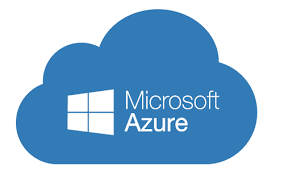
Microsoft offers three categories of cloud computing: platform as a service (PaaS), infrastructure as a service (laaS), and software as a service (SaaS). It provides its laaS and PaaS service under Microsoft Azure brand name.
Microsoft Azure is complex and huge. It comprises of features from which from which the user will chose to build the solution. After opening Azure, there are two portals available that is old portal and new portal. Some things are in old one and new features are available in the new portal. The next step is to choose from where to buy.
It is vital to think about what you have to achieve and understand the offerings of the cloud. The cloud does not run by itself. Decisions have to be made on how to interoperate them and set them up correctly. The cloud is a game changer and requires rigor, and understanding of ‘cloud operations’, including persons to tease out the issues. Azure comprises of many features to configure and learn, and also requires the following:
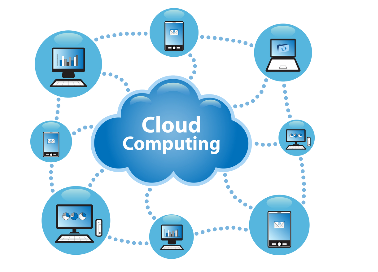

There are various ways to get started with Azure portal free of cost. Microsoft is offering everyone free Azure credit from internal IT to consultants. Here is a list:
Azure is the second largest and most popular laaS and PaaS service on the planet. Azure enjoys a reputation as a reliable, mature, and highly secure public cloud provider.
It offers an extremely large portfolio of cloud services.
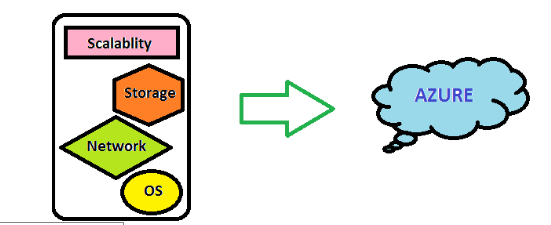
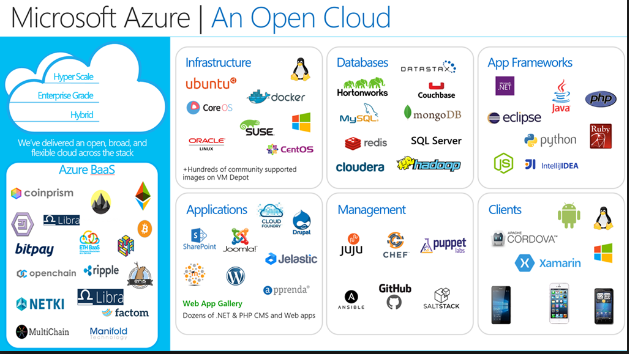
Here’s a glimpse of some of Microsoft cloud computing offerings.
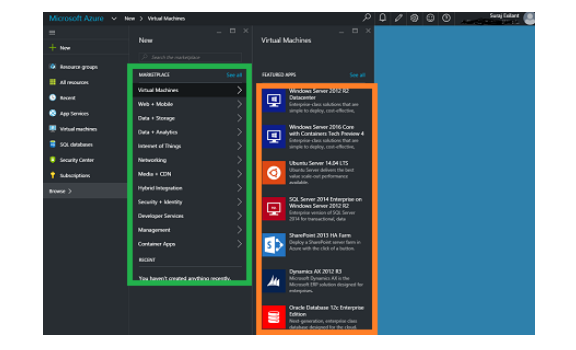
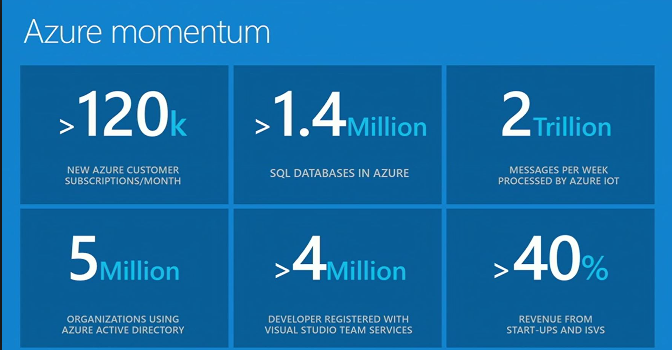
The biggest advantage of Mircosoft Azure can be summed up in one word- Windows.
Organizations that are already using Microsoft software like Office, SQL Server, Windows, using cloud computing service is a natural fit. It helps in using tools and interfaces that are familiar and helps them to get up and run quickly.
Additionally Microsoft has made an effort at enabling hybrid computing, and its Azure track solution will enhance its appeal for enterprise with hybrid environments.
Azure has targeted the government market, and its website claims, "Azure has been recognized as the most trusted cloud for U.S. government institutions, including a FedRAMP High authorization that covers 18 Azure services."
It has a vibrant ecosystem with partnerships with other technologies like Red Hat, Citrix, HPE, Adobe, SAP, and many others.
By 2020, Amazon will grow 18 percent to claim more than half of the market for cloud services, yet Microsoft Azure and Google Cloud Platform will enjoy explosive growth: 200 and 800 percent respectively. (Graphic: Business Wire)


In a survey conducted by Cowen & Co., Microsoft Azure was ranked poorly for its costs.
It can be more expensive as related to other public cloud vendors. It also came under criticism for its IT support, reliability, and performance.
Microsoft Azure could not be the best option for small or medium sized enterprises especially with those which are cost-conscious or with every small or non-existent IT staff.
Microsoft Azure is a public cloud computing platform of Microsoft. It offers various services including computing, storage, analytics, and networking. Users can choose from these services and develop scale new applications in the cloud. As with other cloud providers, Azure also uses pay-as-you-go model of pricing. Microsoft Azure operates on a globalized scale. Other similar major service providers are Amazon Web Services, IBM, and Google Cloud Platform.